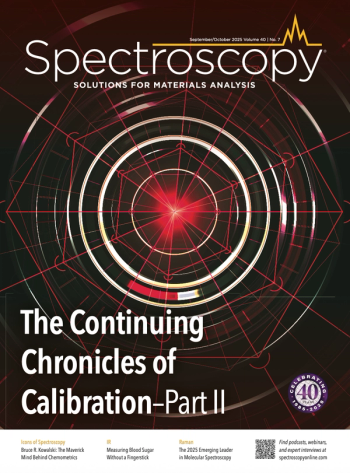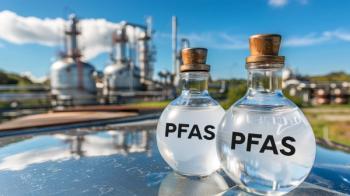
Unraveling the Complex Chemistry of Air–Water Interfaces
Key Takeaways
- Air–water interfaces are crucial in environmental processes, affecting chemical reactions differently than in bulk solutions.
- Experimental challenges include limitations in spectroscopic techniques' depth and time resolution, complicating interfacial data interpretation.
A recent article discussed the need for interdisciplinary collaboration to better understand the unique chemistry occurring at air–water interfaces. Experimental and conceptual challenges of linking molecular-level structure to macroscopic reactivity and calls for integrating advanced spectroscopy, computation, as well as cross-disciplinary approaches to overcome current limitations, are highlighted. This summary was generated with the help of artificial intelligence.
Recently, an article written by Alexandra Deal, an assistant professor at the University of Michigan, discussed the need for interdisciplinary collaboration to uncover new insights about the complex chemistry of air–water interfaces. This article, published in The Journal of Chemical Physics, highlights both the promise and the persistent challenges of studying chemical reactions that occur at the elusive boundary between air and water (1).
What is the interfacial zone and why is it important?
The interfacial zone is the boundary where air and water meet. This area, although only a few molecules thick, plays an important role in several processes that directly impact the environment (2). For example, it has a role in the adsorption and retention of matter, which has become more important because of the increased presence of per- and polyfluoroalkyl substances (PFAS) in the environment (2).
Over the past decade, scientists have uncovered mounting evidence that chemical reactions at air–water interfaces differ significantly from those in bulk solutions. For example, droplets have exhibited altered or enhanced reactivity, suggesting that interfacial processes could influence everything from cloud formation to pollution chemistry (1). Although scientists have noted this observation, investigating this further requires connecting the molecular-level structure of aqueous surfaces with their macroscopic chemical behaviors, which is an ongoing challenge.
What does the article focus on?
Deal’s article focuses on the experimental and conceptual limitations that currently hinder this connection. She writes that one major obstacle lies in the differences between non-surface-specific methods, such as mass spectrometry (MS), and surface-specific spectroscopic techniques, including reflection–absorption spectroscopy (RAS), sum frequency generation (SFG), and X-ray photoelectron spectroscopy (XPS) (1). Each of these techniques provides a unique window into the chemistry of air–water interfaces, but each comes with trade-offs in terms of information depth, time resolution, and sample configuration (1).
The article additionally draws particular attention to information depth. Information depth is defined in Deal’s article as the region from which a spectroscopic technique can extract molecular information (1). Although methods like SFG and XPS are often touted as the most surface-specific, Deal explains that even these techniques can probe deeper layers, depending on solute type and experimental conditions (1). This variability complicates comparisons across studies and underscores the importance of careful experimental design when interpreting interfacial data.
Another major theme explored in the article is time constraint. Currently, researchers encounter difficulties in monitoring interfacial reactions as they occur in real time (1). Most spectroscopic methods require stable interfaces and prolonged acquisition times, which limits their ability to capture fast or transient chemical events (1). This challenge is particularly noticeable in photochemical systems, where light-driven reactions can evolve in milliseconds or less (1).
As a result, spectroscopic instrumentation is mostly not there yet to properly monitor interfacial reactions. In addition, conceptual issues also remain. The boundary between air and water is not a fixed, uniform surface; it is a fluctuating region where solute molecules can dramatically alter the effective interfacial depth (1). This variability poses significant obstacles to quantitative comparisons between different experimental setups.
What are the key takeaways from this article?
There are a couple key takeaways from this study. For one, by integrating advanced spectroscopy with computational simulations and macroscopic measurements, researchers could potentially close the gap between microscale molecular understanding and observable chemical behavior (1). For two, the next generation of discoveries in interfacial chemistry will depend not only on technical innovation but also on the cross-disciplinary synthesis of methods and ideas (1).
Deal wrote that her article “examines some common techniques for studying air–water interfaces through the lens of connecting molecular-level structure with macroscale reactivity. Regardless of development status,” she continued, “all spectroscopic techniques discussed here merit further development with the goal of studying air–water interfacial chemistry” (1).
This article was written with the help of artificial intelligence.
References
- Deal, A. M. Challenges in the Study of Chemistry and Photochemistry at Air–Water Interfaces: Toward In Situ Monitoring of Reaction Kinetics with Spectroscopic Techniques. J. Chem. Phys. 2025, 163, 030902. DOI:
10.1063/5.0269541 - Brusseau, M. L. Determining Air–Water Interfacial Areas for the Retention and Transport of PFAS and Other Interfacially Active Solutes in Unsaturated Porous Media. Sci. Tot. Environ. 2023, 884, 163730. DOI:
10.1016/j.scitotenv.2023.163730
Newsletter
Get essential updates on the latest spectroscopy technologies, regulatory standards, and best practices—subscribe today to Spectroscopy.





